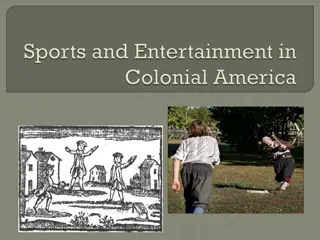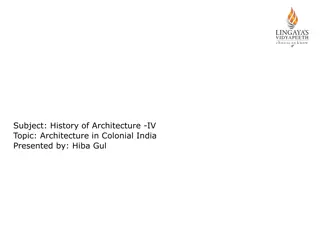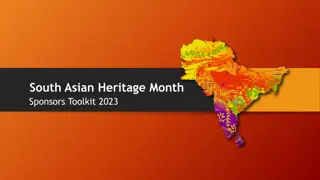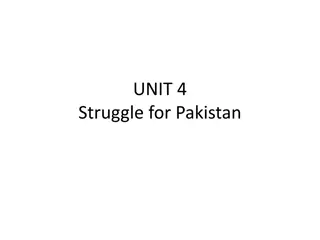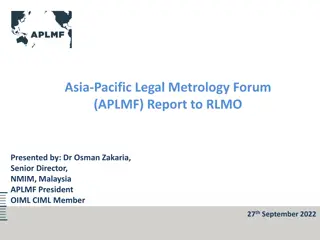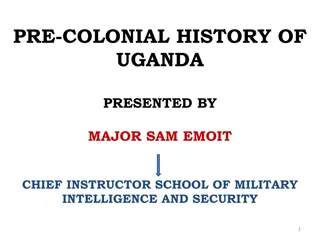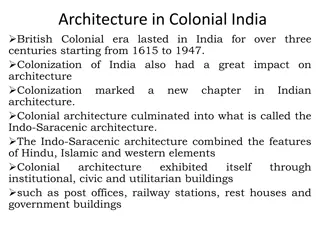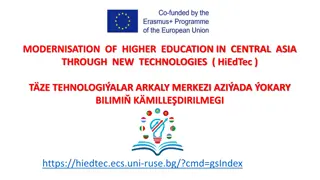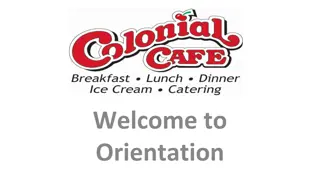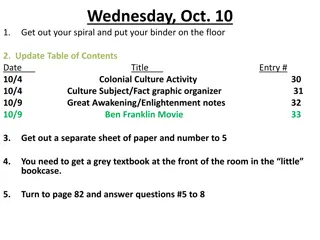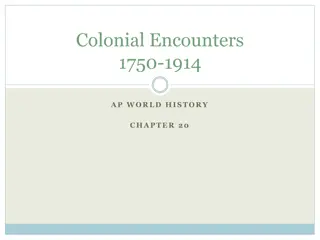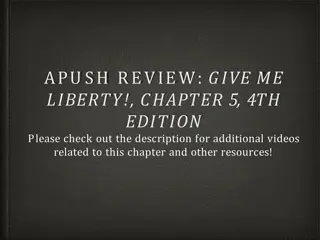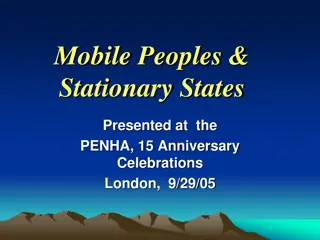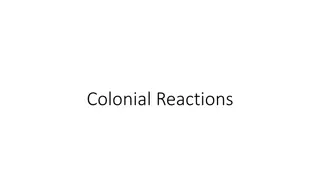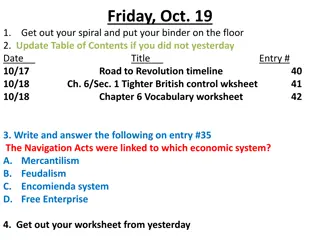Evolution of Medicine in Colonial South Asia
The evolution of medicine in colonial South Asia witnessed a transition from local traditional practices to the dominance of imported European medicine. This shift, marked by the establishment of imperial institutions and training of local physicians in Western techniques, led to a complex interplay between colonial control, nationalist sentiments, and the revival of indigenous medical traditions. The clash between Western medicine and traditional practices, illustrated through instances like the plague epidemic in Bombay and resistance to quarantine measures during Hajj pilgrimages, reflects the intricate dynamics of power, resistance, and cultural exchange in the colonial medical landscape.
Download Presentation

Please find below an Image/Link to download the presentation.
The content on the website is provided AS IS for your information and personal use only. It may not be sold, licensed, or shared on other websites without obtaining consent from the author. Download presentation by click this link. If you encounter any issues during the download, it is possible that the publisher has removed the file from their server.
E N D
Presentation Transcript
Colonial Medicine in South Asia DANIEL TENNANT
Pratik Chakrabarti Western Medicine in Colonial India Initially, EEIC built hospitals often used local markets/methods, but from 1802 they became imperial institutions reliant on imported European medicine 19thCentury colonial hospitals in India (e.g. Madras Medical School) began training local Indians with the aim of creating subordinate local physicians who would learn the superiority of Western medicine Epidemics such as the plague in Bombay (1896-7) met with interventionist sanitary measures from the imperial government David Arnold s argument of the colonization of the body and the human body as the site of imperial control Competition between Indian and English physicians for medical positions fuelled Indian nationalism and the Indianisation of science and medical institutions The medical authorities suggested that trained Indians would become warm advocates ... for the adoption of our superior modes, and desirous of rescuing their countrymen from the ignorance and empiricism of their own practitioners
Mark Harrison Medicine and Colonialism in South Asia Since 1500 Early Visitors to India, e.g. the Portuguese physicians, agreed that locals had the best knowledge on treating local disease The challenge posed by Western medicine sparked introspection and then a resurgence of traditional Indian methods 1866 International Sanitary Conference put pressure on the British government to improve sanitation at pilgrimage sites In Europe sanitisation was becoming synonymous with civilisation and a functional state, they saw it as a duty to bestow this gift on South Asia Scholarly discourse on the reason that early intended sanitation measures were unsuccessful while it was supported by central government after 1947, there was no need actively to revive Indian medical traditions because they were already thriving
Saurabh Mishra Incarceration and Resistance in a Red Sea Lazaretto, 1880-1930 From 1882, Hajj pilgrims were forced to quarantine in the Red Sea, possibly for over 10 days, following cholera scare Coercion, restriction and mistreatment fuelled resistance in three main ways protest, negotiation and avoidance Violent rebellions such as the S.S. Noorkoowa caused by possibility of missing Hajj altogether due to quarantine Richer pilgrims were treated much better and could bribe their way out of restrictions The sheer number of pilgrims made it relatively easy for some to avoid or manipulate the rules at quarantine camps the lack of drinking water was one of the greatest problems at the quarantine camp; however for those who were willing and able to pay a small bribe, this crisis could magically disappear, to the extent that they could even obtain enough to have a leisurely bath
Discussion Question What can the local reactions to epidemics such as plague and cholera in South Asia tell us about the effects and response to colonial medicine in the region? Are they a useful example?


![READ⚡[PDF]✔ Emerging Space Powers: The New Space Programs of Asia, the Middle Ea](/thumb/21554/read-pdf-emerging-space-powers-the-new-space-programs-of-asia-the-middle-ea.jpg)


